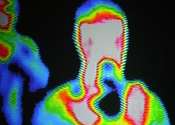Extreme heat, hurricanes, wildfires: How summer's extremes disrupt the power grid
Every second of every day, utilities monitor the flow of power through the nation's electric grid, monitoring whether power generated matches power demanded by homes, businesses, vehicles and more. For every disruption—a ...
Jul 29, 2024
0
6









